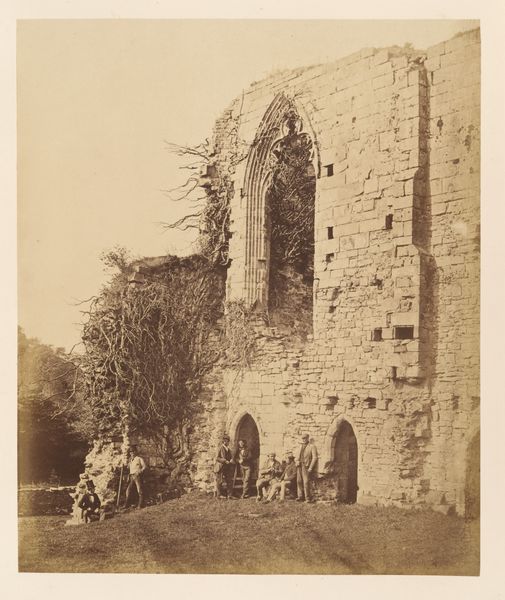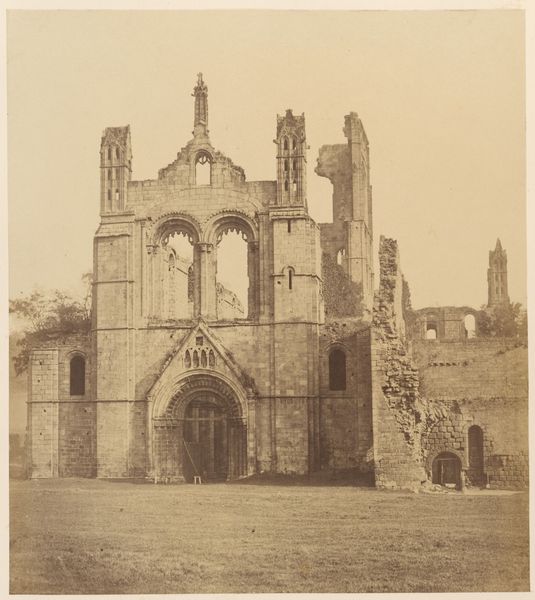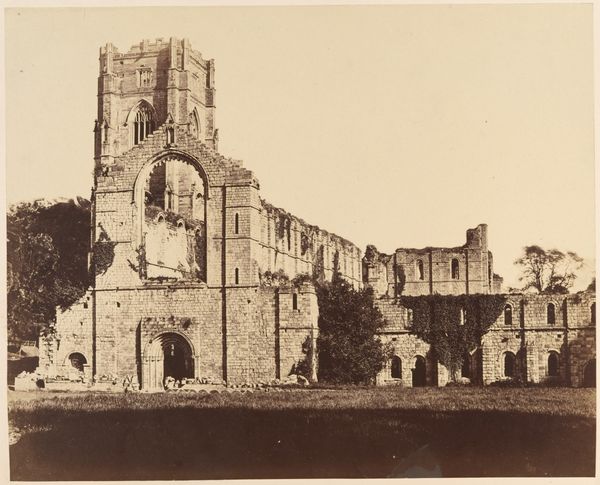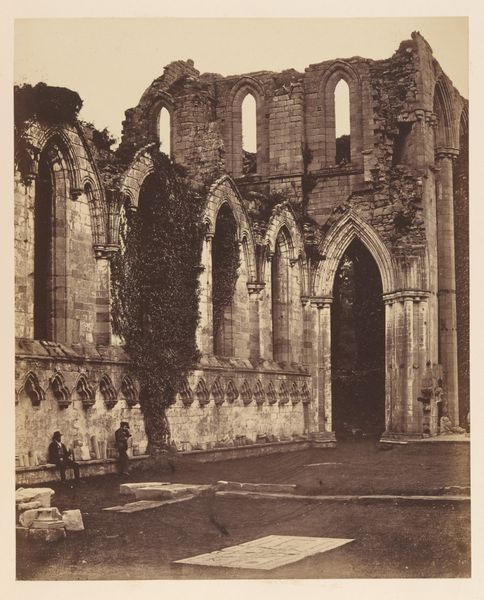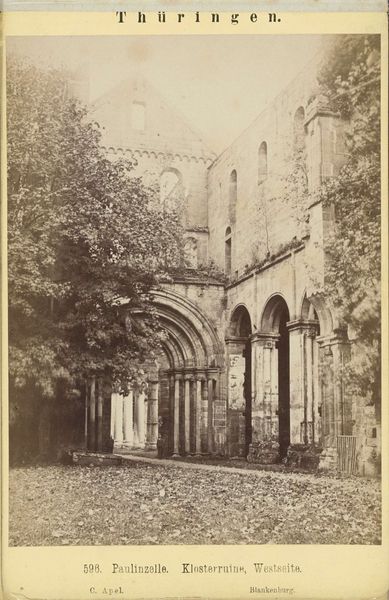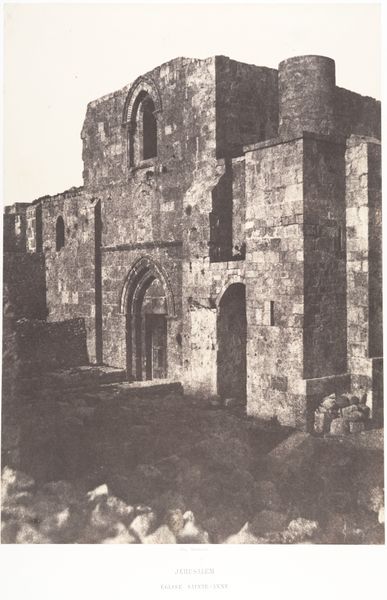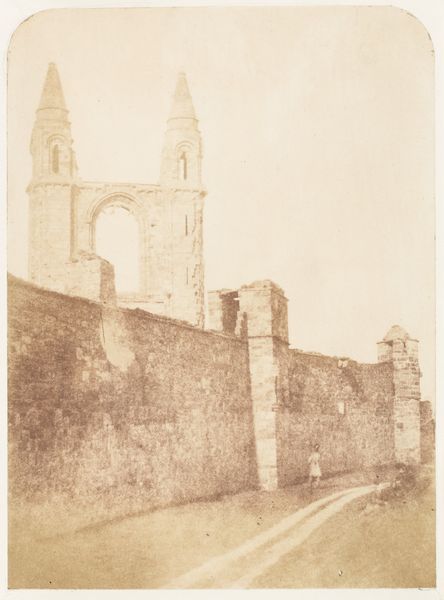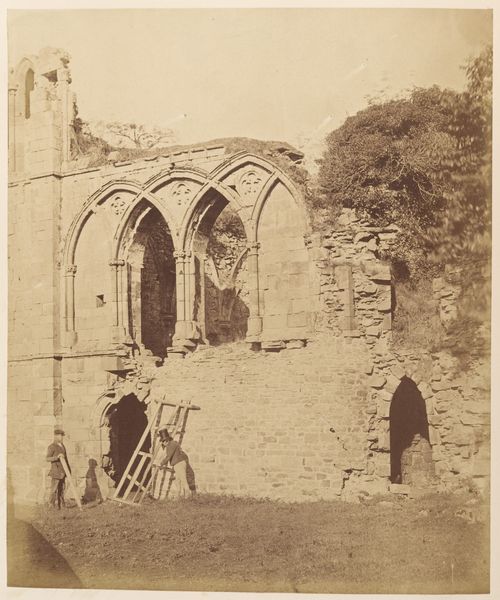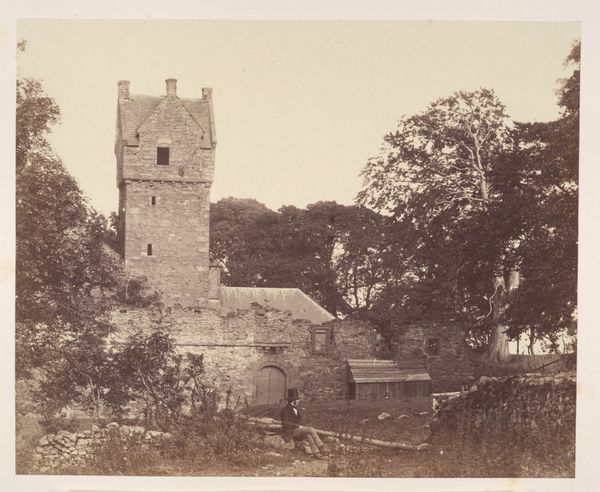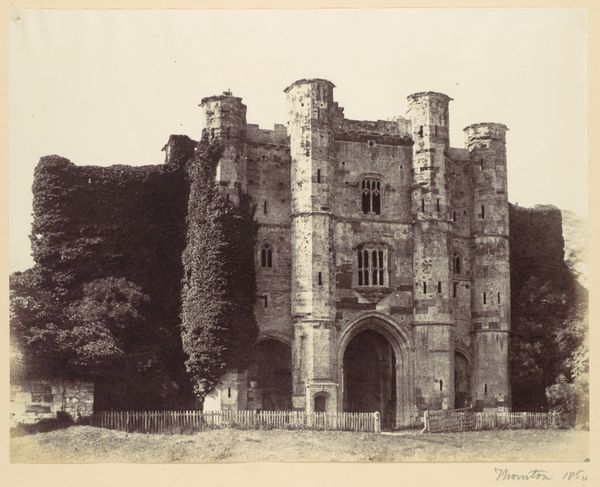
Dimensions: Image: 27.4 x 21.7 cm (10 13/16 x 8 9/16 in.) Mount: 43.9 x 30 cm (17 5/16 x 11 13/16 in.)
Copyright: Public Domain
Curator: Joseph Cundall's "Fountains Abbey: The Church and Chapter House," dating from the 1850s, uses the albumen print method to capture this monastic ruin. It resides now in the Metropolitan Museum. My initial assessment of it circles around its representation of power, history, and ruin through a distinct photographic lens of Romanticism. Editor: Immediately, the atmosphere hits me—this pervasive, melancholic beauty, like something unearthed from a forgotten dream. The sepia tones create a visual poem, right? I get this instant feeling of timelessness and decay. It makes me want to compose a whole series of poems about it! Curator: Consider how photography at this time documented the receding structures of monastic authority, particularly through the aesthetic values associated with the Romantic movement. There's this engagement with medieval history that is interwoven with questions of power, erasure, and evolving visual cultures. How might Cundall's vision situate itself within post-Reformation imaginaries, as the relationship between power, religion, and representation were constantly contested during this period? Editor: Right, I can almost smell the damp stone and feel the chill in the air! There is that quality, of an elegiac whisper – it’s visually very textured. It feels very painterly too. Curator: What’s fascinating about the work, too, is the subtle dialogue between nature and architecture: one imposing upon the other. The integration or negotiation of natural elements with architecture makes this a distinct Romantic-era aesthetic that challenges previously held notions of art history and questions of visual representation. Editor: Agreed! I notice too how that one tree seems to both frame and soften the architecture’s harsh angles—this little defiant assertion of life pushing through the cold, silent stone. It's whispering about resilience, adaptation, maybe even about hope despite ruin. Gives you that bittersweet twinge, doesn’t it? Curator: I would offer it gives me pause to consider how photography became such an essential vehicle for narrating the transformation of sites of religious and institutional importance while engaging viewers across ever shifting perspectives of time, memory and meaning making. Editor: It is just stunning! I think I’m utterly in love with the ghostly quietude it captures.
Comments
No comments
Be the first to comment and join the conversation on the ultimate creative platform.

